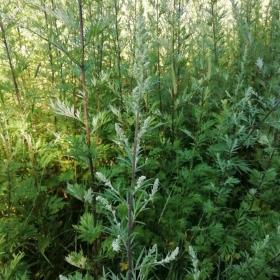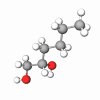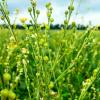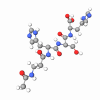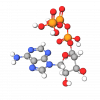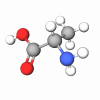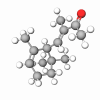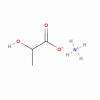Mugwort (Artemisia Vulgaris) is a herbaceous perennial fragrant plant that grows to approximately 1-1.8 meters (3-6 ft) high. The plant grows best in full sun places in light, dry, and well-drained soil. One uses the leaves and the flowering time collected plant as a medical herb.
Mugwort has long been used as a means against worms, and it must be taken in a low quantity for a long time. Artemisia Vulgaris arouses the appetite, stimulates digestion, and also helps with the rise of menstruation. Chinese herbal knowledge used the herb to heat mainly to treat the reproductive organs and the uterus, to stop bleeding, or to slow down bleeding caused by a too-long menstruation period.
Look for mugwort during a long, tiring walk. Chew on a few leaves or flower tops, and your tiredness will disappear because the bitter, aromatic compounds will clarify your mind and look.
Artemisia species became famous because of a sesquiterpenoid lactone, artemisinin, which is effective in the treatment of malaria. Thanks to its soothing properties, Mugwort extract is effective against skin irritation and allergic rashes.Phytoestrogen flavonoids from Artemisia Vulgaris Extract bind to estrogen receptors, preventing premature skin aging and collagen insufficiency. It also contains a vast amount of antioxidants that protect dermal cell membranes and DNA from free radicals and oxidative stress, additionally leaving a significant anti-aging effect.
Ingredients
History
Artemisia was the sister and wife of the Greek/Persian king Mausolus. She governed after his death in 353 B.C. over Halicarnssus and the surroundings. They built a monumental tomb called the Mausoleum, one of the seven world wonders to honor her.
Artemisia was also a famous plant expert and medical investigator. Two hundred, almost all aromatic plants, are of the Artemisia family and are named after her.
Culpeper recommended the herb for all stomach problems, to prevent nastiness after a meal, and to increase the appetite, but as it is too strong, it spoils the taste.
In the Middle Ages, one thought that John the Baptist carried a wreath of Mugwort around his middle, and therefore one also named the plant Saint-Johns root. The root of Mugwort was nailed against the wall of a house to banish the devil or other bad spirits. Also, there were braided wreaths of Mugwort affirmed at a house or shed to protect it against fire and bolds of lightning.
Mugwort became used by poor men as tobacco, separate or with other herbs. Also, the beer was seasoned with Mugwort.
